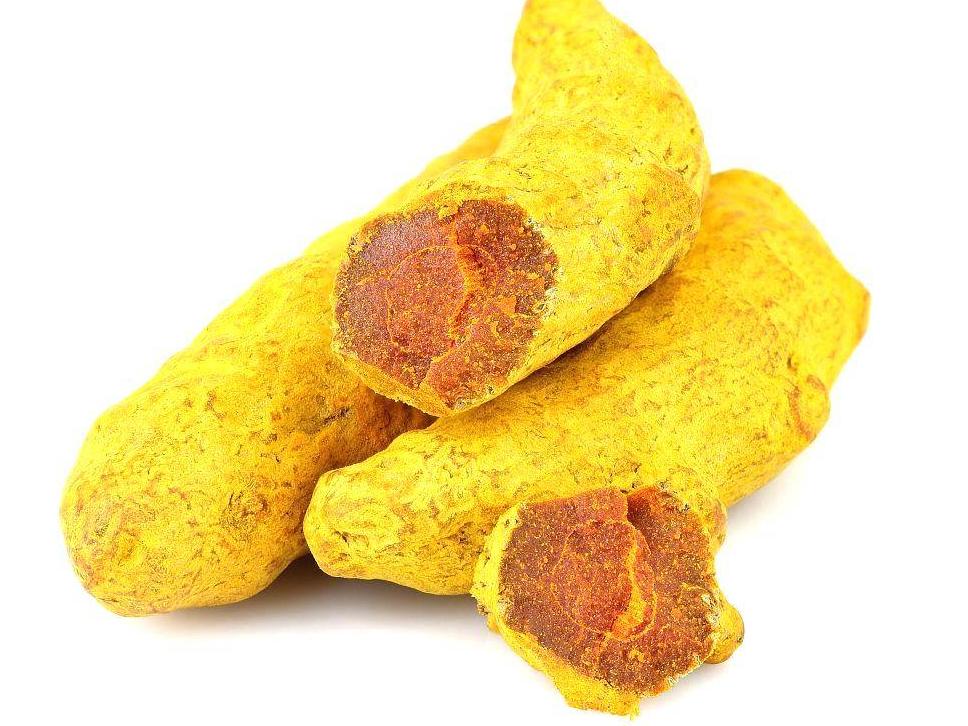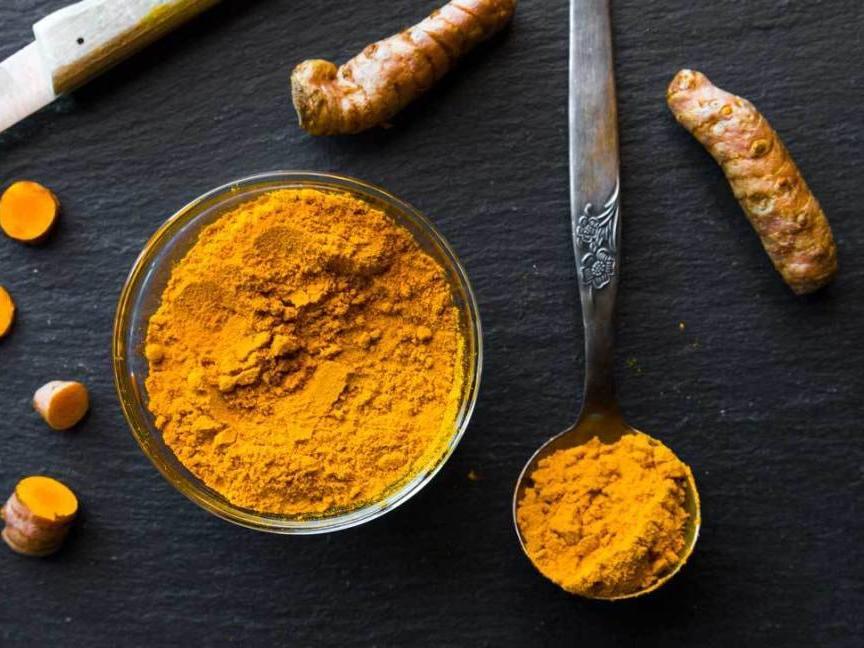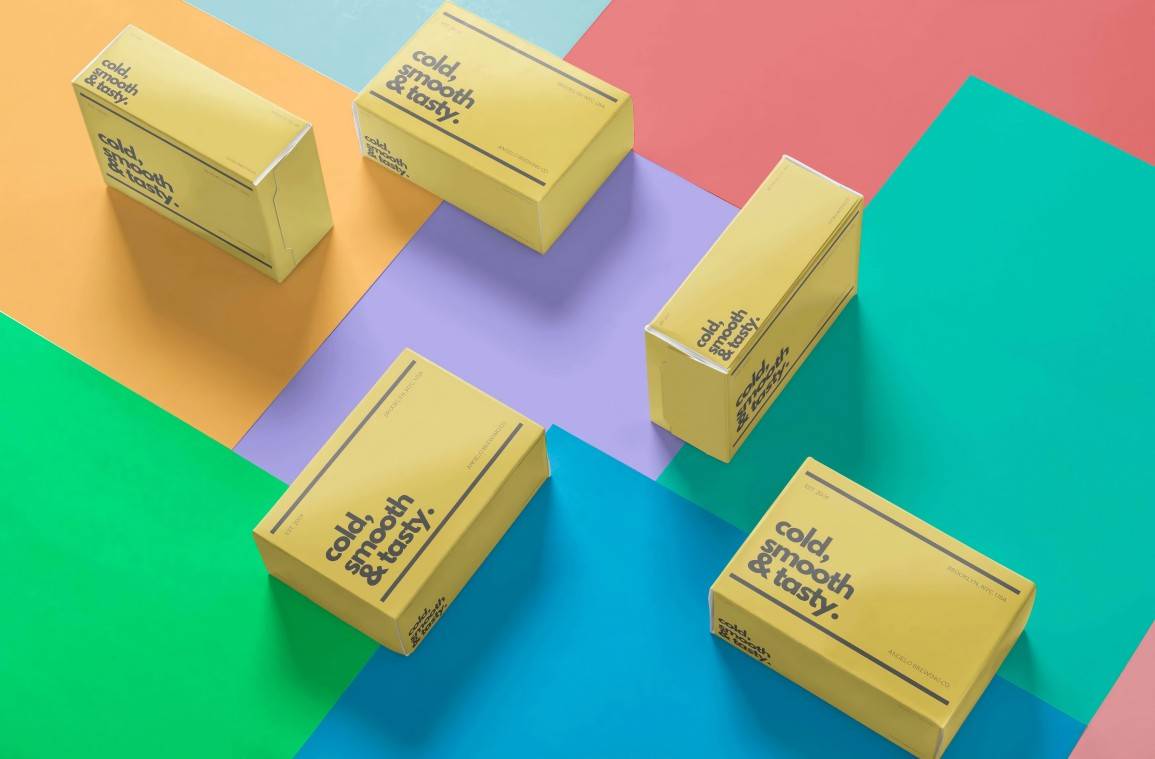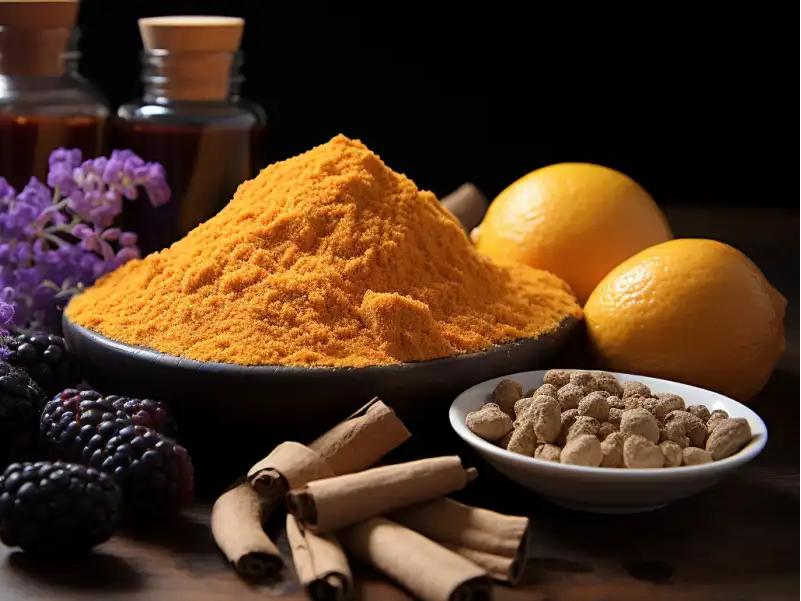Study on the Use of Turmeric Powder in Food Preservation
In recent years, food preservation technology has become one of the research hotspots for scientific researchers [1], and the food additives commonly used for food preservation are generally synthetic additives. Due to their negative health effects, synthetic additives are not widely accepted by consumers, so non-toxic and harmless natural additives are more important [2].
Curcumin is a natural phenolic food additive extracted from the rhizomes of the plant Curcuma longa (turmeric), and is used as a spice and food coloring agent in many Asian countries [3]. In recent years, curcumin has been shown to have anti-inflammatory [4] and anti-cancer activities [5-6], and has been the subject of extensive research in the medical field [7]. Curcumin also has antibacterial activity against bacteria such as Staphylococcus aureus, Escherichia coli, Bacillus cereus and Pseudomonas aeruginosa. After functionalization, curcumin has antibacterial activity against these bacteria [8]. When applied to food, it can play an antibacterial and antioxidant role [9-10]. It is a natural, non-toxic food additive.
Although curcumin has many advantages, its poor water solubility results in a low bioavailability, which limits its scope of application [11]. In order to improve the bioavailability of curcumin, broaden its application in food and enhance its preservation effect, scholars at home and abroad have conducted a large number of studies. After being processed by means of microencapsulation, electrospinning, nanocomplexation, micelles and hydrogels, etc., the bioavailability of curcumin can be increased, its antibacterial and antioxidant properties maintained, and its application range and preservation effect increased [12-15]. This article mainly introduces the principle of curcumin food preservation and the methods of improving the bioavailability of curcumin: a review of microcapsules, electrospinning, nanocomplexation and colloids, and an outlook.
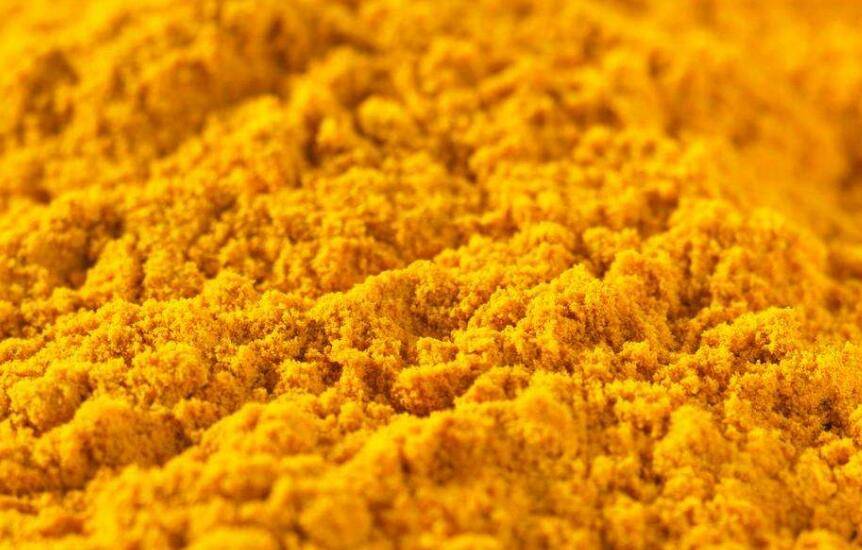
1 Curcumin structure and the principle of food preservation
Curcumin has two active sites, phenolic hydroxyl and β-diketone, as well as other carbon linkages. The diketone part has an enol-like structural interchange, as shown in Figure 1. In the reaction, it has a phenolic hydroxyl group or diketone that can provide a proton. In addition, the transfer of hydrogen atoms in the CH2 group at the center of the chain plays an important role in the antioxidant properties of curcumin and its phenolic hydroxyl group. Specifically, it involves the transfer of an H atom from the alkoxy radical, which is generated at the center of its heptanone chain by molecular rearrangement to form a phenoxy radical. Therefore, the methylene group at the center of the heptanone chain, together with the hydroxyl group, plays a role in the antioxidant activity of curcumin[16-17].
At a certain concentration, curcumin can induce a series of changes in bacteria, including membrane depolarization, Ca2+ influx, and DNA fragmentation. Curcumin affects the structure of the bacterial cell membrane by inducing its production, and destroys the cell membrane to play an antibacterial role [18]. In addition, under light conditions, curcumin can cause an explosion of reactive oxygen species, disrupt the cell's adaptive mechanisms, damage iron metabolism, and inhibit the biosynthesis of iron-sulfur clusters, ultimately leading to cell death [19]. Therefore, curcumin has advantages such as antibacterial and antioxidant properties, and has application potential in the food industry.
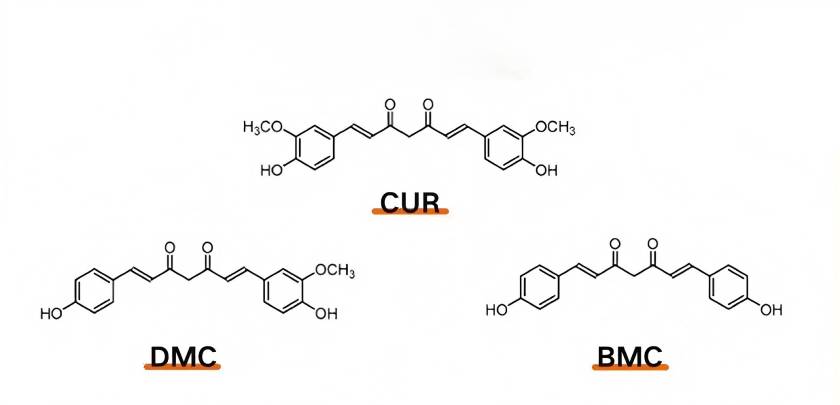
2 Process research on curcumin in food preservation
Turmeric extract has the advantages of being green and natural, and having antibacterial and antioxidant properties, giving it potential for use in food preservation. However, its application is limited by the poor solubility and low bioavailability of pure turmeric extract. Therefore, many researchers have studied how to increase its bioavailability. At present, the main processing techniques for increasing the bioavailability of curcumin are microencapsulation, electrospinning, nano-complexation, micelles and hydrogels.
2.1 Microencapsulation
Microencapsulation is a process that involves coating small particles or droplets with a polymeric material to produce microcapsules or microbeads, which are protected from the external environment by the coating material [20]. Because the wall material has good solubility, the microencapsulation of curcumin, which involves wrapping it in a suitable wall material, not only improves its solubility, but also protects it from oxidation in environments with high relative humidity [21]. In addition, microencapsulation of curcumin can also impart a sustained-release effect. The slow release of curcumin from the microcapsules can extend the shelf life of curcumin, and the controlled process can control the sustained-release time of the microcapsules to achieve the effect of long-term sustained-release preservation [23].
Some scholars have used microencapsulation technology to improve the water solubility of curcumin, maintain its antibacterial properties and facilitate its application in foods. Kavousi et al. [24] used a combined coacervation method combining spray drying and freeze drying to prepare curcumin microcapsules using sodium caseinate as the raw material. The release behavior of curcumin in acidic liquid was studied, and mathematical modeling was performed to study the effect of pH on the properties of microcapsule release and dissolution. It was proved that the pH has good solubility properties between 4 and 7, demonstrating the potential of curcumin microcapsules to control the release of bioactive substances in hydrophobic foods. It was also proved that curcumin, when added to foods, can also act as a nutrient. The research was not limited to simple aqueous solutions, but also took into account the bioavailability in foods, especially acidic foods. This process can also have a good sustained release and dissolution effect in acidic foods.
Wang Y et al. [25] used gelatin and porous starch to microencapsulate curcumin and studied the antibacterial activity of curcumin microcapsules against a variety of foodborne pathogens and spoilage bacteria, including Gram-negative bacteria (Escherichia coli and Yersinia enterocolitica), Gram-positive bacteria (Staphylococcus aureus, Bacillus cereus and Bacillus cereus) and fungi (Aspergillus niger, Penicillium notatum and Saccharomyces cerevisiae). Due to the differences in the structure of the cell membrane, the inhibition efficiency of curcumin is different for different strains. Curcumin microcapsules have a better inhibitory effect on fungi than on bacteria, and the inhibitory effect on gram-positive bacteria is higher than that on gram-negative bacteria. This study shows that microcapsules can well maintain the antibacterial properties of curcumin, providing a theoretical basis for the application of curcumin microcapsules in actual foods.
Wang Y F et al. [26] also used gelatin and porous starch as wall materials to microencapsulate curcumin using spray drying, and studied the practical application effect of curcumin microcapsules in foods such as tofu, bread, and cooked pork. Curcumin microcapsules broadly inhibit the free activity of bacteria. The results showed that when the concentration of curcumin microcapsules was above 0.035%, the microcapsules containing curcumin retained a certain preservative effect even after cooking. The preservative effect of this research on food was tested for the first time, demonstrating the preservative and antibacterial effects of curcumin in actual foods. It can have an effect on foods that we commonly eat, such as bread, and demonstrates the potential for curcumin in food applications.
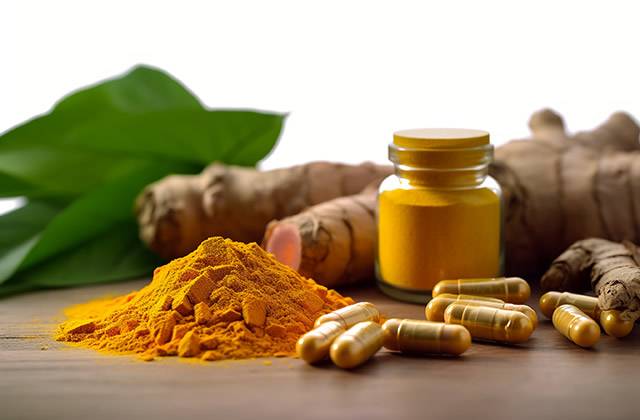
Laokuldilok et al. [27] prepared curcumin microcapsules using spray drying and tested their properties. Microcapsules with high curcumin encapsulation rates, low volatility, low water content and low water absorption were produced. Odor tests were carried out on the microcapsule powder and turmeric powder. The test results proved that the microcapsules can block the odor of curcumin itself and can well avoid the impact of curcumin on the odor of food. Color is an important factor affecting the sensory quality of food. Food with pleasing colors can stimulate people's appetite and desire to buy. When curcumin acts as a food preservative, it needs to adhere to the surface of the food under certain circumstances. Curcumin has a slight odor, and microencapsulation isolates curcumin from the external environment, which not only has a sustained-release effect, but also isolates the odor from affecting the food. Curcumin microcapsules with different wall materials have great advantages in these respects.
Zheng Junhua [28] used modified starch as a wall material to microencapsulate curcumin and added it to jelly as a pigment. The color difference between the prepared jelly and the jelly without added microcapsules was calculated to calculate the ability of the microcapsules to preserve the appearance and color of the jelly. After 28 days, the color difference between the microencapsulated and non-microencapsulated jellies was 2.78 and 9.30 NBS units, respectively. This proves that curcumin microcapsules can effectively inhibit the increase in the color difference of the jelly. This study demonstrates the preservation effect of microcapsules on the color of the jelly, and visually shows the potential for application. Microencapsulation technology can improve overall performance, reduce water content, volatility, etc., and can well maintain sensory indicators such as color in foods.
Although there has been some research on curcumin microcapsules in food preservation, because the wall materials of microcapsules are mostly polysaccharides such as starch and gelatin, which are non-toxic and harmless, they have certain advantages. However, the encapsulation rate of microcapsules is relatively low, and the encapsulation rate is not only affected by the processing technology, processing temperature, processing time and material ratio, but also by the drying method. Because the finished product has a slow-release effect, the drying process has a certain impact on the encapsulation rate of the microcapsules. In addition, because the finished microcapsule product also has a slow-release effect, it cannot be stored for a long time before use, and so on. This requires further research.
2.2 Electrospinning
Electrospinning is a new fiber preparation technology that has been applied to the delivery of bioactivity, active packaging, enzyme immobilization and filtration. The nanostructured fiber morphology of electrospun fibers has a high specific surface area and a small particle size [29], which can maintain its antioxidant activity [30] and increase the stability and slow release of the load [31]. Electrospinning can provide a good carrier for improving the insufficient bioavailability of curcumin, retaining its various properties, and the electrospun film loaded with curcumin can be used for food packaging.
Chen et al. [32] used polylactic acid as the loading fiber to prepare curcumin electrospun fibers containing 1%, 3%, and 5% by mass, with an average diameter of 756–971 nm. Chen et al. [32] used polylactic acid as the loading fiber to prepare curcumin electrospun fibers with 1%, 3%, and 5% mass fractions, respectively. Infrared and scanning electron microscopy were used to demonstrate that there was no chemical reaction between the two and that the electrospun fibers were uniform and free of microspheres. It was also found that the curcumin-loaded electrospun fibers could be completely degraded. In the study, the addition of curcumin could reduce the diameter of the nanofibers. Electrospinning was used to overcome the surface tension of the liquid, allowing the formation of nanofibers. This shows that electrospinning can be a good carrier for loading curcumin, and that controlling the voltage of electrospinning can control the diameter of the fibers and thus some of their properties. At the same time, the loading process in electrospinning has a large specific surface area, and the combination of curcumin and electrospinning can improve its bioavailability and load curcumin into the film packaging. However, in order for electrospinning to become a food preservative, it must also have good antibacterial properties.
Wang et al. [33] used electrospinning technology to prepare antibacterial zeatin-loaded corn zein fibers. The prepared fibers had a high encapsulation rate, and the encapsulated fibers still had a certain degree of antioxidant capacity. It was also demonstrated that curcumin and the fibers were connected by hydrogen bonds, and the fibers showed good antibacterial activity against Staphylococcus aureus and Escherichia coli in experiments. The research proved that the electrospun fibres loaded with curcumin utilize hydrogen bonds to link the curcumin, without damaging the structure of the curcumin itself, and can maintain the antioxidant and antibacterial properties of curcumin. Alehosseini et al. [34] encapsulated curcumin in electrospun fibers of gelatin and zein, and the electrospun protein fibers loaded with curcumin showed a long-lasting slow-release effect in food simulants. The electrospun fibers were tested in different foods, and the results showed that the curcumin gelatin electrospun fibers were more suitable for oily foods, while the zein-based coating would be more suitable for contact with food with high water content. Different electrospun carriers can be used to increase the application of curcumin in different foods, and even applied to food packaging to make it functional, demonstrating the application potential of electrospun curcumin in different foods.
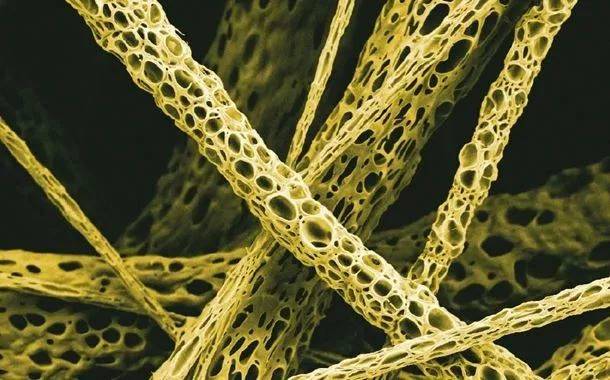
Electrospinning has many advantages. Similar to microencapsulation, it has a sustained-release effect, and electrospun materials also have good air permeability [35], which is a great advantage in the application of breathable but impermeable films. At the same time, the material has a large specific surface area, which gives it good stability when loaded with curcumin and allows it to come into contact with food. Compared with other processes, the film made by electrospinning loaded with curcumin is closer to the current form of food packaging. However, electrospinning also has limitations. It is difficult to apply electrospun films to applications that require high gas barrier properties. The insufficient gas barrier properties can be solved by laminating with a film with better barrier properties. Moreover, electrospinning of curcumin needs to go through electrospinning, so the choice of material is affected by the viscosity of the material after dissolution. The electrospinning of many proteins and other degradable substances is difficult, and their viscosity can be increased by adding electrospinning auxiliaries. In addition, electrospinning is similar to microencapsulation, and the finished product of electrospinning loaded with curcumin cannot be stored for a long time.
2.3 Nanocomplex
nanoparticles are a new type of carrier with high drug loading and encapsulation rates. Curcumin complexed with protein nanoparticles can greatly increase the bioavailability, controlled release performance [36], and stability of curcumin, while maintaining its antioxidant and antibacterial properties. In addition, protein nanoparticles themselves come from high-protein foods and can be eaten directly, so they have a wide range of applications in the food industry [37].
Gomez-Estaca et al. [38] used corn protein polymer as a raw material and prepared spherical nanoparticles with a compact structure and narrow particle size distribution using the electrospray method. The ratio of curcumin to protein was 1:500 to 1:10. After 3 months of dark storage at 23 °C and 43% relative humidity, no significant changes were observed in the size and morphology of the nanoparticles, nor in the curcumin content. The study also showed good dispersibility in semi-skimmed milk. The nanoparticles also have a high specific surface area, as in electrospinning, which improves the bioavailability of curcumin. The curcumin carrier itself is derived from a high-protein food, which initially demonstrates the potential for the application of curcumin nanoparticles in high-protein foods. Hu et al. [39] used hydrophobic proteins as cores and non-hydrophilic polysaccharides (pectin) as shells to prepare curcumin-loaded nanoparticles. The encapsulation rate of the nanoparticles for curcumin can reach 86%. The obtained nanoparticles are spherical, relatively small (250 nm in diameter), and have a relatively uniform size distribution (low polydispersity index), which proves that the nanoparticles, after being converted into powder, also have good water dispersibility. The powder can be re-dissolved in water, and powdered products are easier to store, which can save some storage costs. In addition, the curcumin complex in powder form may have application possibilities in functional foods.
Chen et al. [40] studied the complexation of nanoparticles and curcumin in unheated and heated (75–95 °C) soy protein isolate (SPI) and its effect on the stability and bioavailability of curcumin. The results showed that the amount of curcumin in the complex after being placed in 95 ℃ water for 4 h was more than twice that of the uncomplexed curcumin, and the solubility in water increased by 98,000 times compared with that of free curcumin. The nano-complexing process greatly increased the thermal stability and solubility of curcumin. From a series of studies, curcumin can improve its bioavailability after complexation, while also improving its dispersibility and functionality, and demonstrating a higher solubility than microcapsules and electrospinning. In addition, Weng et al. [41] used a combination of heat treatment and continuous pH adjustment to prepare nano-particles based on ginseng protein. The prepared nanoparticles had a uniform spherical shape with a particle size in the range of 100 nm. The curcumin-loaded nanocomplex had good thermal and light stability, increased the curcumin residue under UV and visible light irradiation, and had good antioxidant capacity.

Deka et al. [42] prepared curcumin-loaded chitosan-sodium phosphate nanoparticles (CPNs), and measured the average particle sizes of CPNs and curcumin-loaded CPNs to be 53 nm and 91 nm, respectively. the release of curcumin nanodrugs is higher under acidic pH conditions than under normal pH conditions. At the same time, curcumin shows inhibitory activity against gram-positive bacteria, gram-negative bacteria and fungi at trace amounts (0.5 mg/mL). In addition, nanoparticles have a good fresh-keeping effect in foods that change over time in an acidic environment. Curcumin maintains good antibacterial activity and stability after complexation, and the antibacterial agent produced by combining curcumin and nanomaterials is not prone to drug resistance, which increases the application potential of curcumin both in use and storage.
Nanoparticles complexed with curcumin not only increase its solubility, controlled release and maintain its antibacterial properties, but also have higher stability than microcapsules and electrospinning methods. It is more stable, easier to store, more soluble, and has a wider range of applications than methods such as microencapsulation and electrospinning. The nanoparticles themselves are also food grade or nutrients, which are green and healthy, naturally degradable, and have great potential for use in food preservation and antibacterial applications. However, there has been relatively little research on nano-complexed curcumin in actual foods, and there has been more theoretical research.
2.4 Colloids
Curcumin-containing colloidal preparations generally come in two types: micelles and hydrogels. The use of curcumin-containing colloidal preparations can also effectively increase its solubility, stability and slow-release properties. At the same time, when applied to food, it can also demonstrate functionality as well as curcumin's antioxidant and antibacterial activity [43]. Esmaili et al. [44] used the protein in camel milk to make curcumin-containing micelles, proposing a method of loading curcumin using proteins as colloidal carriers. It was found that the solubility of curcumin loaded in the colloid increased by at least 2500 times, and that it had better antioxidant properties than free curcumin. Yazdi et al. [45] attempted to use milk proteins to prepare curcumin-containing micelles, and studied the effect of heating milk as a variable to test its complexation with curcumin. The results showed that the protein heated at 80 °C was denatured and had a better adsorption effect on curcumin. The two studies proposed that curcumin and food protein components form micelles, demonstrating two process methods for increasing the bioavailability of curcumin using dairy products as a source. The raw materials are widely available, green and safe, and there is no pollution when applied to dairy products. Preliminary results show the potential of curcumin micelles in dairy products.
Wang Yonghui [46] used a zein hydrolysate to construct a composite nanoparticle colloidal delivery system modeled on curcumin. The system has good physical stability, and the solubility of the colloidal system in water is significantly improved compared to free curcumin. It also greatly improves the chemical stability during storage. In addition, the effect of adding soluble soy polysaccharides was also studied. Under the synergistic effect, the stability of the curcumin colloidal system in an acidic environment was improved. Gorye et al. [47] used oat β-glucan octenyl succinate to load curcumin, and mixed the micellar solubilized curcumin solution with fruit juices such as papaya juice, pineapple juice and cantaloupe juice at a ratio of 1:1 to prepare the curcumin. The degradation half-life of curcumin in the colloid was tested at different times, It was found that the stability of the micelles decreased with increasing heating temperature in the range of 70–90 °C. In addition, curcumin colloids have different stabilities in different fruit juices. Curcumin colloidal preparations can be prepared according to the different needs of different fruit juices, so as to improve the process according to demand.
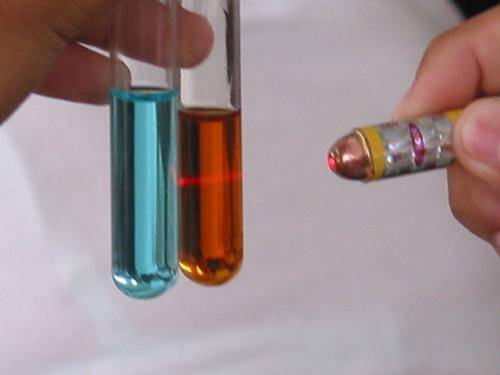
On the other hand, Khanji et al. [48] used spray drying to study the encapsulation of curcumin in micellar casein and the preparation of the powder. The prepared colloid had a high curcumin encapsulation rate, and the colloid had rehydration and gelling ability after being made into a powder, which can be used in instant foods such as milk powder. In addition, the colloid also has good antioxidant properties, and the preparation is simple to store. Adding it to instant foods can also delay food spoilage. Some scholars have also begun to study the properties of curcumin-containing colloids in foods. Tosati et al. [49] used tapioca starch and gelatin as raw materials, added purified curcumin, and prepared a hydrogel coating. compared the photodynamic antimicrobial activity of the hydrogels against Listeria monocytogenes at different incubation temperatures and with different curcumin contents, and tested their antimicrobial properties in food by coating them on sausages. The test results showed that the hydrogels had high antimicrobial activity under UV light. Compared with traditional packaging, the use of coated films to achieve food preservation has the advantage that the colloidal formulation can come into good contact with the food, thus demonstrating the application potential of curcumin-loaded colloidal systems in food preservation and antibacterial applications.
Because of its excellent properties, there is great potential for the use of gels in food, especially functional foods. Curcumin-loaded gels can be stored as a powder after processing, and the powder has gelation ability after rehydration, which is relatively stable. In addition, the selected materials are similar to those of nanocomplexes, mostly protein materials. In addition, compared with the other three processing methods, the method of gelation is relatively simple in terms of cost and process. However, due to the existence of gels, has certain advantages in applications such as colloidal foods or coated film packaging. However, due to the form of colloid, the adverse effects on the appearance and taste of foods still need to be addressed, and it can be applied to corresponding colloidal foods to avoid adverse effects.
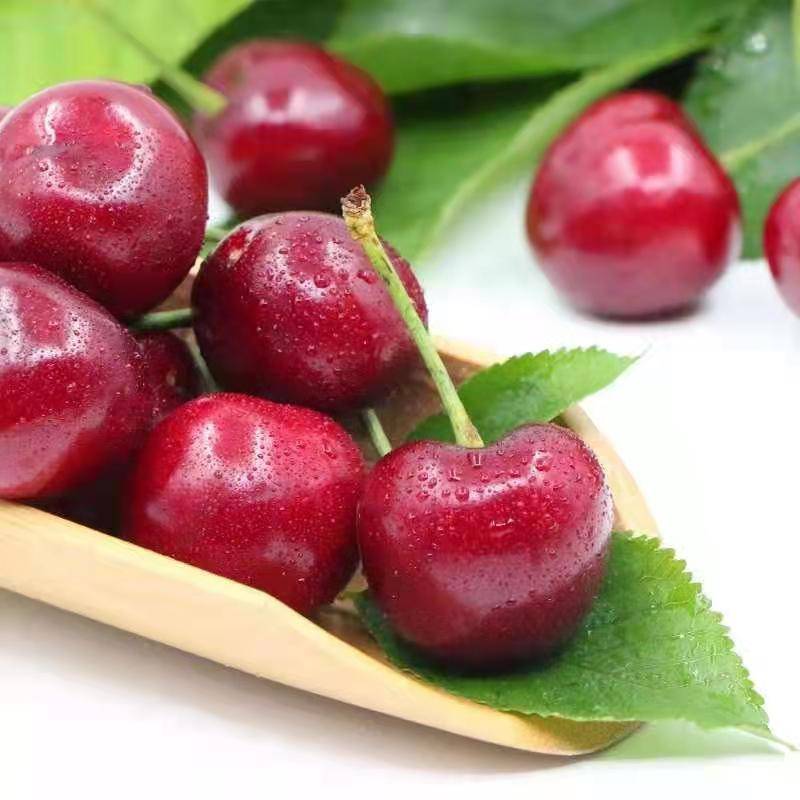
3 Conclusion
As food safety is increasingly being taken seriously, food preservation technology has also attracted attention. Curcumin is a natural food additive with the advantages of being non-polluting, degradable, antibacterial and anti-oxidant, and has great application prospects in food. In the field of food preservation, substances such as curcumin-containing microcapsules, electrospinning, nanoparticles and colloids can not only extend the shelf life of food through slow release, but also most of the materials that load curcumin are biodegradable biomass materials, so the overall material is environmentally friendly. At the same time, many processes cannot be left for too long after preparation because of their slow-release properties. The stability of the product can be increased by adding substances such as chitosan, which is bound by anionic and cationic groups. The form of nanodosage can be applied to foods with similar properties to avoid adverse effects. Because curcumin itself is a natural pigment and can be used as a preparation that can be directly applied to food, it has broad prospects for improving the color, taste, etc., of food while preserving it. However, large-scale production requires further research by scholars.
Reference:
[1]Martindale W,Schiebel W.The impact of food preservation on food waste[J].British Food Journal,2017,119:2510-2518.
[2]Gokoglu N. Novel natural food preservatives and applications in seafood preservation : a review[J]. Journal of the Science of Food and Agriculture,2019,99:2068-2077.
[3]Ye F Y,Lei D D,Wang S M,et al. Polymeric micelles of octenylsuccinated corn dextrin as vehicles to solubilize curcumin [J].LWT-Food Science and Technology,2017,75 : 187-194.
[4 ]de Almeida M,da Rocha B A,Francisco CRL,et al. Evaluation of the in vivo acute antiinflammatory response of curcumin-loaded nanoparticles[J].Food & Function,2018,9 : 440-449.
[5 ] Darshini S ,Reema S ,Pal P ,et al. Curcumin Ag nanoconjugates for improved therapeutic effects in cancer[J]. International Journal of Nanomedicine,2018,13 :75-77.
[6] Chen Jianping, Pang Yimeng, Liu Ying, et al. Evaluation of the in vitro antitumor activity of curcumin supramolecular complexes [J]. Food Industry Science and Technology, 2018, 39 (12): 6-10.
[7] Doello K,Ortiz R , Alvarez P J,et al.Latest in vitro and in vivo assay ,clinical trials and patents in cancer treatment using curcumin : a literature review[J]. Nutrition & Cancer,2018,70 (4) : 1-10.
[8]Esmaeelzadeh M,Salehi P,Bararjanian M,et al. Synthesis of new triazole tethered derivatives of curcumin and their antibacterial and antifungal properties[J]. Journal of the Iranian Chemical Society,2019,16:465-477.
[9]Mahmoud H K,Al-Sagheer A A,Reda F M,et al. Dietary curcumin supplement influence on growth,immunity,antioxidant status,and resistance to,aeromonas hydrophila,in,oreochromis niloticus[J].Aquaculture,2017,475 : 16-23 .
[10] Zhang Yan, Duan Xueqin, Gao Gang, et al. Study on the optimization of the curcumin extraction process and its antioxidant activity by response surface methodology [J]. Food Industry Science and Technology, 2015, 36 (6): 269-273, 278.
[11] Shin G H,Li J,Cho J H,et al. Enhancement of curcumin solubility by phase change from crystalline to amorphous in cur- TPGS nanosuspension[J].Journal of Food Science,2016,81 (2) : N494-N501.
[12] Chen Jianping, Peng Wanyi, Qin Xiaoming, et al. Structural identification of curcumin supramolecular complexes and their antioxidant activity [J]. Food Industry Science and Technology, 2017, 38 (21): 21-25.
[13] Massimino L C,Faria H A M,Yoshioka S A . Curcumin bioactive nanosizing : Increase of bioavailability [J]. Industrial Crops and Products,2017,109:493-497.
[14]Liang J,Wu W,Lai D,et al.Enhanced solubility and targeted delivery of curcumin by lipopeptide micelles [J]. Journal of Biomaterials Science,Polymer Edition,2015,26(6) : 369-383.
[15]Rezaei A,Nasirpour A. Encapsulation of curcumin using electrospun almond gum nanofibers : Fabrication and characterization[J].International Journal of Food Properties, 2018,21 ( 1) : 1608-1618.
[16]Barzegar A. The role of electron -transfer and H -atom donation on the superb antioxidant activity and free radical reaction of curcumin [J]. Food Chemistry,2012,135 ( 3 ) : 1369-1376.
[17]Jha N S,Mishra S,Jha S K,et al. Antioxidant activity and electrochemical elucidation of the enigmatic redox behavior of curcumin and its structurally modified analogues [J ].Electrochimica Acta,2015,151 : 574-583.
[18]Yun D G,Lee D G. Antibacterial activity of curcumin via apoptosis - like response inEscherichia coli [J] . Applied Microbiology and Biotechnology,2016,100( 12) : 5505-5514.
[19]Shlar I,Droby S,Rodov V. Modes of antibacterial action of curcumin under dark and light conditions : A toxicoproteomics approach[J].Journal of Proteomics,2017,160: 8-20.
[20]Correa L C,Moldao-Martins M,Alves V D.Advances in the application of microcapsules as carriers of functional compounds for food products[J].Applied Sciences-Basel,2019,571 : 1-18. [21]Paramera E I,Konteles S J,Karathanos V T. Stability and release properties of curcumin encapsulated in Saccharomyces cerevisiae,β - cyclodextrin and modified starch [J] . Food Chemistry,2011,125 (3) : 913-922.
[22]Monge,A A,Bergamasco,R D,de Moraes,F F,et al. Development of a technique for psyllium husk mucilage purification with simultaneous microencapsulation of curcumin [J]. PLoS One,2017,12 (8) : 1-13.
[23] Andreea B ,Cristina B A ,Estevinho B N ,et al. Microencapsulation of curcumin by a spray -drying technique using gum arabic as encapsulating agent and release studies[J]. Food and Bioprocess Technology,2018,11 : 1795-1806.
[24]Kavousi H R , Fathi M,Goli S A H. Novel cress seed mucilage and sodium caseinate microparticles for encapsulation of curcumin : An approach for controlled release [J]. Food and Bioproducts Processing,2018 : 128-136.
[25]Wang Y,Lu Z,Wu H,et al.Study on the antibiotic activity of microcapsule curcumin against foodborne pathogens [J] . International Journal of Food Microbiology,2009,136 ( 1 ) : 71-74.
[26]Wang Y F,Shao J J,Zhou C H,et al. Food preservation effects of curcumin microcapsules[J].Food Control,2012,27 ( 1) 113-117.
[27]Laokuldilok N,Thakeow P,Kopermsub P,et al.Optimisation of microencapsulation of turmeric extract for masking flavour[J]. Food Chemistry,2016,194: 695-704.
[28] Zheng Junhua. Extraction, stabilization and application research of curcuminoids [D]. Guizhou: Guizhou University, 2015.
[29] Wang Xiaolin, Shi Cuiping, Zhang Nan, et al. Progress in the application of electrospun nanofibers in the food industry [J]. Food Industry Science and Technology, 2017, 38 (24): 334-338.
[30]Blanco-Padilla A,Lopez- Rubio A,Loarca-Pina G,et al. Characterization,release and antioxidant activity of curcumin - loaded amaranth -pullulan electrospun fibers[J]. LWT -Food Science and Technology,2015,63 (2) : 1137-1144.
[31]Celebioglu A,Aytac Z,Kilic,M E.Encapsulation of camphor in cyclodextrin inclusion complex nanofibers via polymer -free electrospinning : Enhanced water solubility ,high temperature stability,and slow release of camphor[J].Journal of Materials Science,2018,53 : 5436-5449.
[32]Chen Y,Lin J,Fei Y,et al. Preparation and characterization of electrospinning PLA/curcumin composite membranes [J]. Fibers and Polymers,2010,11 (8) : 1128-1131.
[33]Wang H,Hao L,Wang P,et al. Release kinetics and antibacterial activity of curcumin loaded zein fibers[J]. Food Hydrocolloids,2017,63(Complete) : 437-446.
[34]Alehosseini A,Gomez-Mascaraque L G,Martinez-Sanz M, et al.Electrospun curcumin -loaded protein nanofiber mats as active/bioactivecoatings for food packaging applications[J].Food Hydrocolloids,2019,87:758-771.
[35]Cherpinski A,Szewczyk P K,Gruszczynski A,et al.Oxygen-scavenging multilayered biopapers containing palladium nanoparticles obtained by the electrospinning coating technique [J].Nanomaterials,2019,9 (262) : 2-19.
[36]Chen F P,Ou S Y,Tang,C H.Core-shell soy protein-soy polysaccharide complex ( nano) particles as carriers for improved stability and sustained release of curcumin [J] .Journal of Agricultural and Food Chemistry,2016,64 (24) : 5053-5059.
[37]Kasaai,M R. Zein and zein-based nano-materials for food and nutrition applications : A review[J].Trends in Food Science & Technology,2018,79 : 184-197.
[38]Gomez-EstacaJ,Balaguer M P,Gavara R , et al.Formation of zein nanoparticles by electrohydrodynamic atomization : Effect of the main processing variables and suitability for encapsulating the food coloring and active ingredient curcumin [J] . Food Hydrocolloids,2012,28 ( 1) : 82-91.
[39]Hu K,Huang X,Gao Y,et al. Core - shell biopolymer crystallization[J].Food Hydrocolloids,2016,56 : 170-179.
[47]Pereira R B,Bennett R J,Hemar Y,et al. Rheological and microstructural characteristics of model processed cheese analogues[J]. Journal of Texture Studies,2010,32 ( 5 -6 ) : 349-373.
[48]Tarrega A,Yven C,Sémon E,et al. In -mouth aroma compound release during cheese consumption : Relationship with food bolus formation[J]. International Dairy Journal,2011,21 (5) : 358-364.
[49]Arancibia C,Castro C,Jublot L,et al. Colour,Rheology, flavour release and sensory perception of dairy desserts. Influence of thickener and fat content [J]. LWT - Food Science and Technology,2015,62 ( 1) : 408-416.
[50]Boisard L,Andriot I,Martin C,et al. The salt and lipid composition of model cheeses modifies in-mouth flavour release and perception related to the free sodium ion content[J]. Food Chemistry,2014,145 :437-444.
[51]Guo Q,Ye A,Lad M,et al. Behaviour of whey protein emulsion gel during oral and gastric digestion : Effect of droplet size[J].Soft Matter,2014,10(23) : 4173-4183.
[52 ] Mumme K,Stonehouse W. Effects of medium - chain triglycerides on weight loss and body composition : A meta - analysis of randomized controlled trials [J] . Journal of the Academy of Nutrition and Dietetics,2015,115 (2) : 249-263.
[53]Zou Y,Thijssen P P,Yang X Q,et al.The effect of oil type and solvent quality on the rheological behavior of zein stabilized oil-in-glycerol emulsion gels[J]. Food Hydrocolloids,2019,91 : 57-65.
[54]Foegeding E A,Daubert C R , Drake M A,et al. A comprehensive approach to understanding textural properties of semi-and soft-solid foods[J]. Journal of Texture Studies,2011, 42 (2) : 103-129.
[55]Sarkar A,Goh K K T,Singh H. Colloidal stability and interactions of milk-protein-stabilized emulsions in an artificial saliva[J].Food Hydrocolloids,2009,23 (5) : 1270-1278.
[56]Wang M Q,Takahiko D,Hu X Y,et al. Influence of ionic strength on the thermostability and flavor( allyl methyl disulfide) release profiles of calcium alginate microgels [J ] Food Hydrocolloids 2019,93 :24-33.
[57]Luo N,Ye A Q,Frances M,et al. Structure of whey protein emulsion gels containing capsaicinoids : Impact on in - mouth breakdown behaviour and sensory perception [J ] . Food Hydrocolloids,2019,92 : 19-29.
[58]Bigaski R , Jéssica C,Granato D,et al. Effect of lactobionic acid on the acidification,rheological properties and aroma release of dairy gels[J].Food Chemistry,2016,207 : 101-106.
[59]Jouenne E and CrouzeT J.Effect of pH on retention of aroma compounds by β - lactoglobulin[J]. Journal of Agricultural and Food Chemistry,2000,48 (4) : 1273-1277.
[60]Saint-eve A,Kora E P,Martin N. Impact of the olfactory quality and chemical complexity of the flavouring agent on the texture of low fat stirred yogurts assessed by three different sensory methodologies[J].Food Quality and Preference,2004,15 : 655-668.
[61]Saint-eve A,Martin N,Guillemin H,et al. Flavored yogurt complex viscosity influences real-time aroma release in the mouth and sensory properties [J]. Journal of Agricultural and Food Chemistry,2006,54 (20) : 7794-7803.
[62]Tournier C,Sulmontrosse C,Se' mon E,et al. A study on texture-taste-aroma interactions: Physico-chemical and cognitive mechanisms[J].International Dairy Journal,2009,19:450-458.
[63] Cui Zumei, Yu Mingjie, Zhu Yali, et al. Texture properties and oil droplet sustained-release capacity of soy protein-xanthan gum composite emulsion gels [J]. Food and Fermentation Industry, 2015, 41 (12): 102-107.


 English
English French
French Spanish
Spanish Russian
Russian Korean
Korean Japanese
Japanese